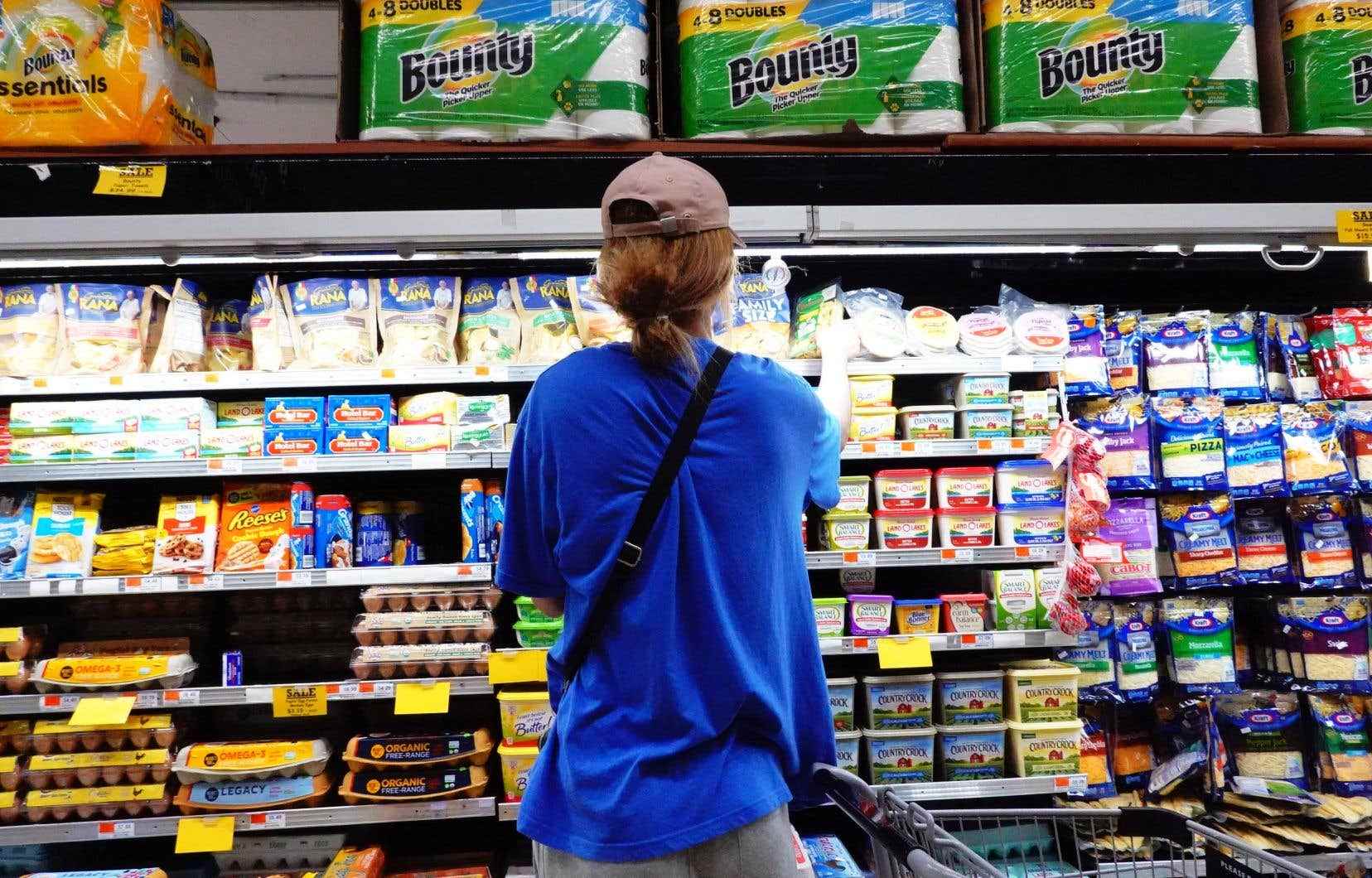Consumer prices resumed their escalation in May in the United States, breaking a new high in 40 years, and the American president, Joe Biden, called for doing more, and faster, to control this high inflation.
Consumer prices jumped 8.6% year on year, from 8.3% last month, according to the Consumer Price Index (CPI) released Friday by the Labor Department. The rise reached 1% over one month after +0.3% in April. “We must do more and quickly” to slow inflation, Joe Biden said in a statement, recalling that it was his “economic priority”.
These figures are bad for Joe Biden a few months before a crucial electoral deadline, which will see the renewal of a large part of the elected representatives of Congress. “My government will continue to do everything in its power to lower prices for the American people,” he pledged, also calling on Congress to quickly pass legislation to stop shipping carriers from inflating prices. price. Government, Congress, central bank: “we all have to make efforts to reduce inflation”, he underlined.
He also attacked the American oil giants, so that they “not use the difficulties created by the war in Ukraine as a reason to make things worse for the families with excessive profit taking or hikes. price “. “Exxon has made more money than God this quarter,” the US president then joked after a speech at the Port of Los Angeles, again blaming the tanker for not pumping more oil, which that could drive prices down, just to drive up profits.
Midterm elections
The Republican opposition accuses the Democratic president’s economic policy of being inflationary: “in Joe Biden’s America, basic necessities have prices of luxury items”, according to the president of the Republican National Committee, Ronna McDaniel . Housing, gasoline, plane tickets, food, new and used cars, but also medical care, clothing, the increase was general, dampening hopes of a lasting slowdown in inflation, which began timidly in April.
“The higher inflation numbers reflect a continued confluence of factors,” said Kathy Bostjancic, chief economist for Oxford Economics. Supply difficulties, which began with the COVID-19 pandemic, have driven prices up around the world, a move accentuated in the United States by a labor shortage, while generous financial aid government have stimulated demand.
The war in Ukraine has exacerbated the phenomenon, driving up gasoline and food prices. Inflation compared to May 2021 is thus 34.6% for energy (biggest increase since September 2005) and 10.1% for food (biggest increase since March 1981).
Dry pans
While Americans are highly dependent on their cars, and often favor fuel-guzzling models, gasoline prices are breaking new records every day, averaging $4.986 per gallon on Friday, compared to $3.073 a year ago. (+62%). It even boosted requests for out-of-fuel assistance by a third in April, according to data from the AAA motorist association, cited by the Washington Post.
Excluding energy and food, so-called core inflation, however, was stable over one month, at +0.6%, and even slowed down over one year, to +6%.
This situation should convince the US Central Bank (Fed) to tighten its key rates further next week at its monetary committee meeting. It has already raised them twice, by a quarter point and then by half a percentage point, to the range of 0.75 to 1%.
The fight against inflation could weigh on the US economy, even raising fears of a recession. Unemployment could rise again. “Should we fear stagflation? “, that is to say a prolonged period of low growth and high inflation, wonders Gregory Daco, chief economist of EY-Parthenon: “no, not in 2022, but the risks will be much greater in 2023”.
Wall Street down, morale plummets
Galloping inflation in the United States in May caused the New York Stock Exchange to fall sharply on Friday, where the indices recorded their worst week since January. According to final figures at the close, the Dow Jones star stocks index dropped 2.7% to 31,392.79 points. The tech-heavy Nasdaq plunged 3.5% to 11,340.02 points. The S&P 500, more representative of the US market, lost 2.9% to 3900.86 points.
Not only have stocks fallen, but the dollar has risen sharply and bond yields have risen. Rates on 2-year Treasury bills jumped to their highest level since the end of 2007, at 3.06%. Similarly, yields on 10-year notes were approaching their 2018 peak at 3.15%.
“High inflation, a Fed that will raise rates more and an increased risk of a slowdown in the economy, that’s what’s happening,” summarized Karl Haeling of LBBW. The US Central Bank’s Monetary Committee will meet next week, and markets are already expecting a 50 basis point tightening of key interest rates, after a similar hike last month. But in view of the surge in prices, more and more analysts are wondering if the Central Bank will not tighten the screw more strongly by triggering a hike in key rates by 75 points, an extremely rare step in recent history. from the Fed.
The concerns aroused by this tenacious rise in prices certainly weighed on consumer confidence, which collapsed in June. The University of Michigan’s consumer sentiment index hit an all-time low, falling 14% from May to 50.2 points, a decline that surprised analysts.
